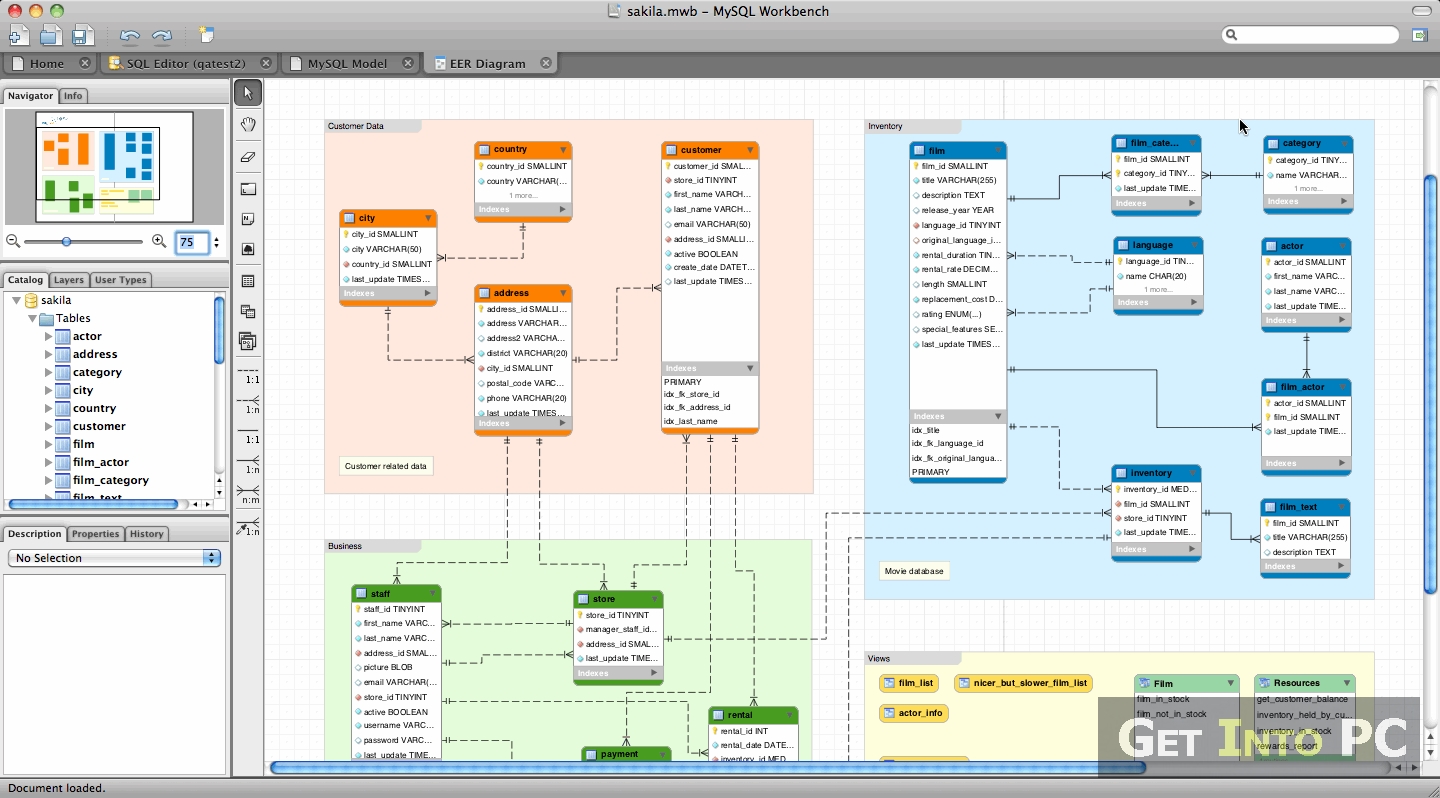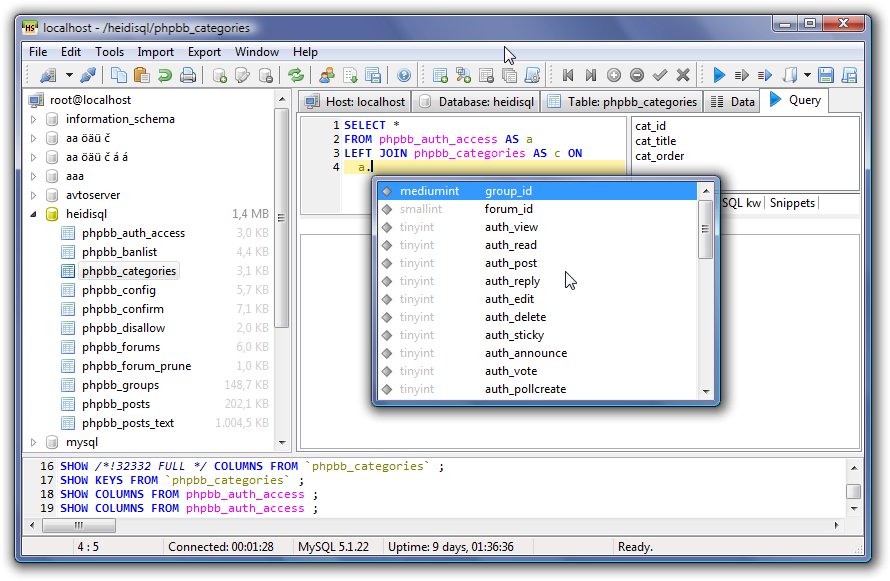

- #Mysql database gui tools for mac how to#
- #Mysql database gui tools for mac update#
- #Mysql database gui tools for mac software#
- #Mysql database gui tools for mac free#
SIDU is a simple, intuitive and easy database admin tool.

#Mysql database gui tools for mac free#
SIDU is a FREE database client working via web browser. SIDU stands for SQL Select Insert Delete Update. That is why this was web application for basic management of MySQL. But the problem is they are very complex for non expert user. There are many web tools that interact with MySQL, PHPMyAdmin is a great example. MySql is probably the most used database for web application. Almost all the modern web sites use databases.
#Mysql database gui tools for mac update#
you can also manage all other databases on the same server that the WordPress database user has access to.Ī php web application that will help you insert and update stuff in your MySQL Database. You must be logged in as an administrator to use MyWebSQL. There is also a wordpress plugin that allows editing/managing the WordPress database directly from within the admin panel. It even supports themes so you can create your own to suit your needs. You can add/edit/change whatever you like.
#Mysql database gui tools for mac software#
MyWebSQL is completely open source software and available free for download. Just login to your database and manage your database as if you are working on your desktop. With interface that works just like your favourite desktop applications, you don’t need to keep switching over webpages to get simple things done. MyWebSQL is the ultimate desktop replacement for managing your MySQL databases over the web. see what databases you have permission with.

Due to its simplicity script really fast and need just a little server resources, even if you don’t know SQL it’s still easy to:
#Mysql database gui tools for mac how to#
Instead of installing huge phpMyAdmin (~11Mb) and trying to figure out how to use all it’s features, just upload one ~10Kb file and it’s ready to use. Phpminiadmin – extremely lightweight alternative to heavy phpMyAdmin for quick and easy access MySQL databases. If you are on WordPress, there’s a plugin that include this tool in WordPress for a fast management of your database. The interface is functional rather than attractive, but it’s fast and easy to use. It’s easy to browse or update data, and run your own SQL queries. Adminer can modify tables, indexes, foreign keys, views, stored procedures, functions, and triggers. Get to know why is Adminer better than phpMyAdmin. Adminer is available for MySQL, PostgreSQL, SQLite, MS SQL and Oracle. Conversely to phpMyAdmin, it consist of a single file ready to deploy to the target server. it is a very good phpMyAdmin alternative.Īdminer (formerly phpMinAdmin) is a full-featured database management tool written in PHP. Backups are easy and you can run ad h oc SQL queries.SQL Buddy has a fast and attractive Ajax-powered interface with multiple languages and themes. The tool allows you to create, modify, or drop tables, indexes, foreign key relationships, and records. SQLBuddy places an emphasis on ease of installation and a simple user interface used for MySQL and SQLite database management. No doubt it is the best, here are list Of MySQL Database Management Clients that are good alternatives to phpMyAdmin. It can perform various tasks such as creating, modifying or deleting databases, tables, fields or rows executing SQL statements or managing users and permissions. it is supported and used by most PHP and MySQL web hosting company for database management. It is a well-known fact that phpMyAdmin (a popular free and open source tool written in PHP intended to handle the administration of MySQL with the use of a web browser) is the most popular tool to interact with MySQL databases. The use of MySQL management clients or tools save us the stress and hardship of using MySQL commands line. MySQL is the world’s most widely used open source relational database management system (RDBMS) that runs as a server providing multi-user access to a number of databases.


 0 kommentar(er)
0 kommentar(er)
